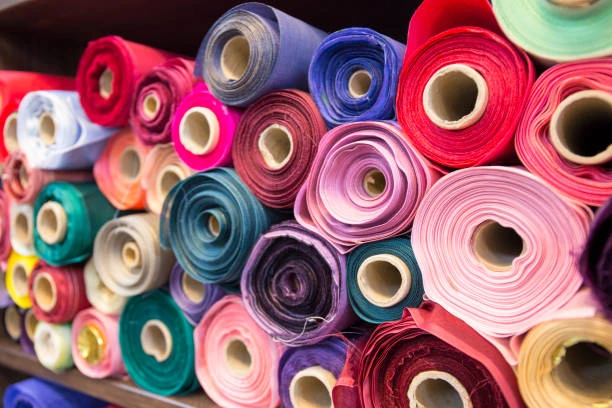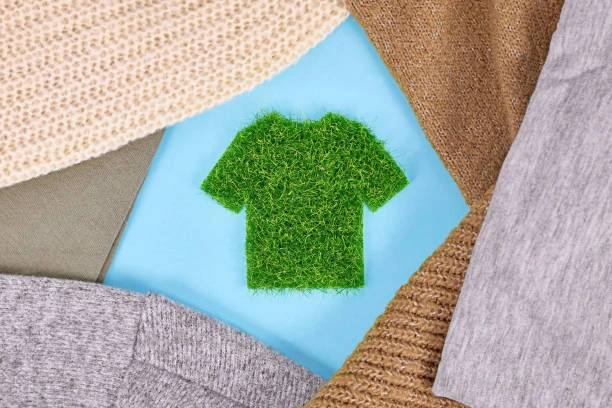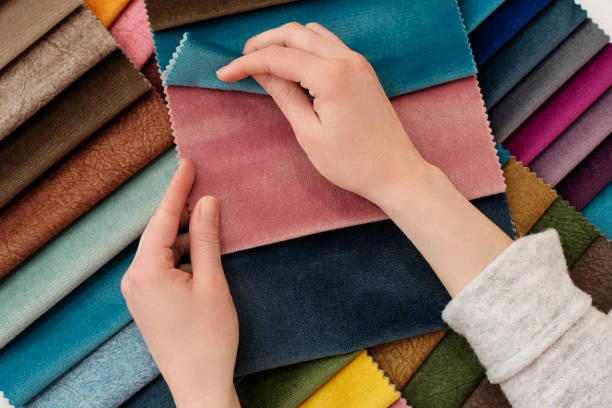Fabric Selection in Apparel Manufacturing: A Critical Decision
A lot goes on behind creating a single piece of clothing that only a few people know about. After a piece of apparel is designed, the manufacturers of that piece need to think long and hard about bringing it to life. One of the critical decisions is fabric selection in apparel manufacturing.
Many factors influence the fabric selection process. The choice of fabric doesn’t just impact how the clothes look; it also plays a crucial part in determining the overall quality and how well the clothing works.
Factors Influencing Fabric Selection
Fabric selection is a crucial step in creating apparel, and various factors come into play. Here, we’ll explore four key factors that significantly influence the choice of fabric, explained in simple terms.
Fiber Types
The material used, like cotton, polyester, or a mix, affects how the fabric feels and behaves. Different fibers have unique properties that impact the comfort and durability of the clothing.
Weaving and Knitting Techniques
How the fabric is made, whether woven or knitted, determines its texture, strength, and flexibility. The construction method influences the overall quality and appearance of the final product.
Fabric Weight and Thickness

This refers to how heavy or light the fabric is and how thick or thin it feels. Weight and thickness affect comfort and suitability for different seasons or types of clothing.
Read More: 10 Must-Have Wardrobe Essentials for Every Fashionista
Color and Pattern Considerations
The choice of color and patterns on the fabric impacts the appearance and market appeal of the clothing. Aesthetic features are crucial in consumer preferences and the product’s success.
Understanding these factors empowers designers and manufacturers to make informed decisions, creating garments that look good and meet consumers’ functional needs and preferences.
Performance Properties of Fabrics
Durability
Ensuring that the fabric can handle the rough and tumble of everyday wear is super important. When discussing fabric durability, we focus on keeping your clothes dry from all the moving and shaking of your daily activities.
Breathability
Think of breathability, like giving your clothes a bit of fresh air. It’s all about how well the fabric lets air flow through, making you feel comfy, especially when rocking activewear. You wouldn’t want your clothes feeling stuffy. Breathable fabrics help you stay cool and breezy.
Moisture-Wicking Abilities
Fabrics that can whisk away sweat are called moisture-wicking fabrics, and they are quite common in sportswear and outdoor gear. Being able to stay dry and comfortable outdoors doing outdoor activities like sports or hiking is very helpful.
Stretch and Recovery
Certain situations call for fabrics that can stretch and bounce back like champs. Whether you’re doing yoga poses or just reaching for the stars, you want your clothes to move with you. Fabrics with good stretch and recovery ensure they stretch when needed but snap back to their original shape, keeping you looking and feeling fantastic.
Sustainable Fabric Options

Eco-Friendly Fibers
The growing recognition of environmental concerns among consumers who care about the planet has sparked an increased desire for fabrics made from eco-friendly fibers. People are now more interested in materials that come from sustainable sources, like organic cotton or recycled polyester.
Recycling and Upcycling Initiatives
Manufacturers actively seek ways to give new life to existing materials, contributing to a circular economy. This means finding creative ways to reuse and recycle materials instead of wasting them. By exploring recycling and upcycling initiatives, companies are making positive strides in reducing their environmental footprint.
Energy-Efficient Production Processes
Sustainability goes beyond just the materials used; it extends to how they are made. There is a rising trend in adopting energy-efficient production processes. This means finding ways to manufacture fabrics with less environmental impact, using technology and practices that consume less energy. This shift toward energy efficiency is becoming more popular as the industry strives to become more environmentally responsible.
Cost Considerations
Balancing Quality and Budget Constraints
Manufacturers face the challenge of delivering quality products within budget limitations.
Long-Term Cost-Effectiveness
Investing in higher-quality fabrics may prove cost-effective in the long run due to enhanced durability.
Trends in Fabric Innovation

Smart Textiles
Integrating technology into fabrics opens up new possibilities for functionality and design.
Nanotechnology in Fabrics
Nanomaterials enhance fabric properties, offering benefits such as water resistance and antibacterial features.
3D Printing Applications
3D printing in fabric creation allows for intricate designs and customizable textures.
Challenges in Fabric Selection
Sourcing Reliable Suppliers
Identifying suppliers you can trust is important to ensure the fabric stays consistently good. This is where companies like poshgarments come in. Companies like them have made a name for themselves by creating products that are high quality, made from quality fabrics and have a good track record.
Addressing Ethical Concerns
The business is now thinking hard about being fair and nice to everyone involved in making the fabric. They want to be open about where the fabric comes from and ensure everyone working on it gets treated well.
Keeping Up With Market Trends
Businesses have to figure out quickly what people want so they can make fabrics and clothes that everyone will like. It’s like staying in the loop with what’s cool right now.
Conclusion
Proper fabric selection in apparel manufacturing goes well beyond mere aesthetics. Common factors such as color and type impact the final product’s appearance. However, performance factors such as durability and breathability affect how well it feels to wear the apparel. There are other issues that apparel manufacturers need to consider, such as sustainability and keeping up with the trends to ensure their clothes meet customer demands.
Must Read Blog: Fashion for All: Inclusive and Adaptive Clothing Brands
FAQs
How do different fibers affect the quality of apparel?
The choice of fibers influences characteristics like comfort, durability, and breathability, impacting the overall apparel quality.
What are the key considerations when choosing sustainable fabrics?
Sustainable fabric selection involves evaluating the source of fibers, recycling initiatives, and the environmental impact of production processes.
Can smart textiles revolutionize the apparel industry?
Smart textiles with integrated technology can bring unprecedented functionality, such as temperature regulation and health monitoring.
How do manufacturers balance cost and quality in fabric selection?
Striking a balance between cost and quality involves carefully considering material costs, production efficiency, and long-term durability.
What role does collaboration play in successful fabric selection?
Collaboration between designers and manufacturers ensures the fabric aligns with the design vision, fostering continuous improvement through feedback loops.

